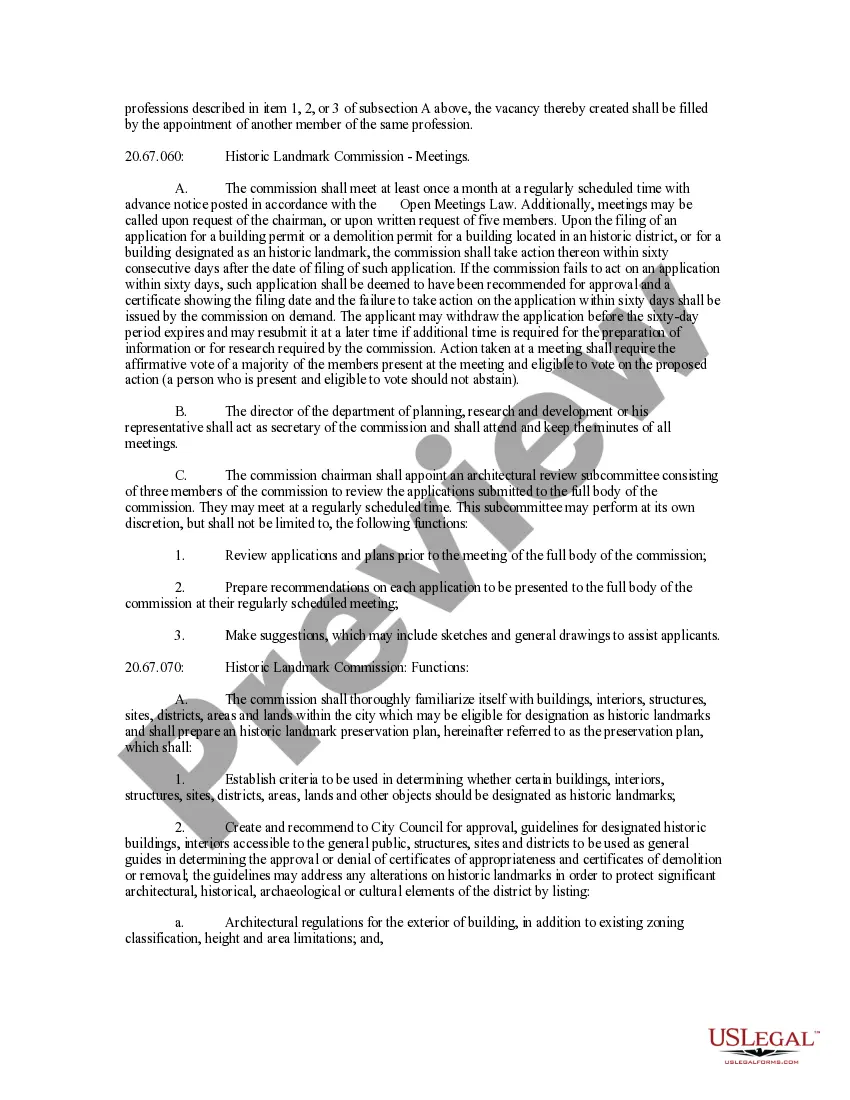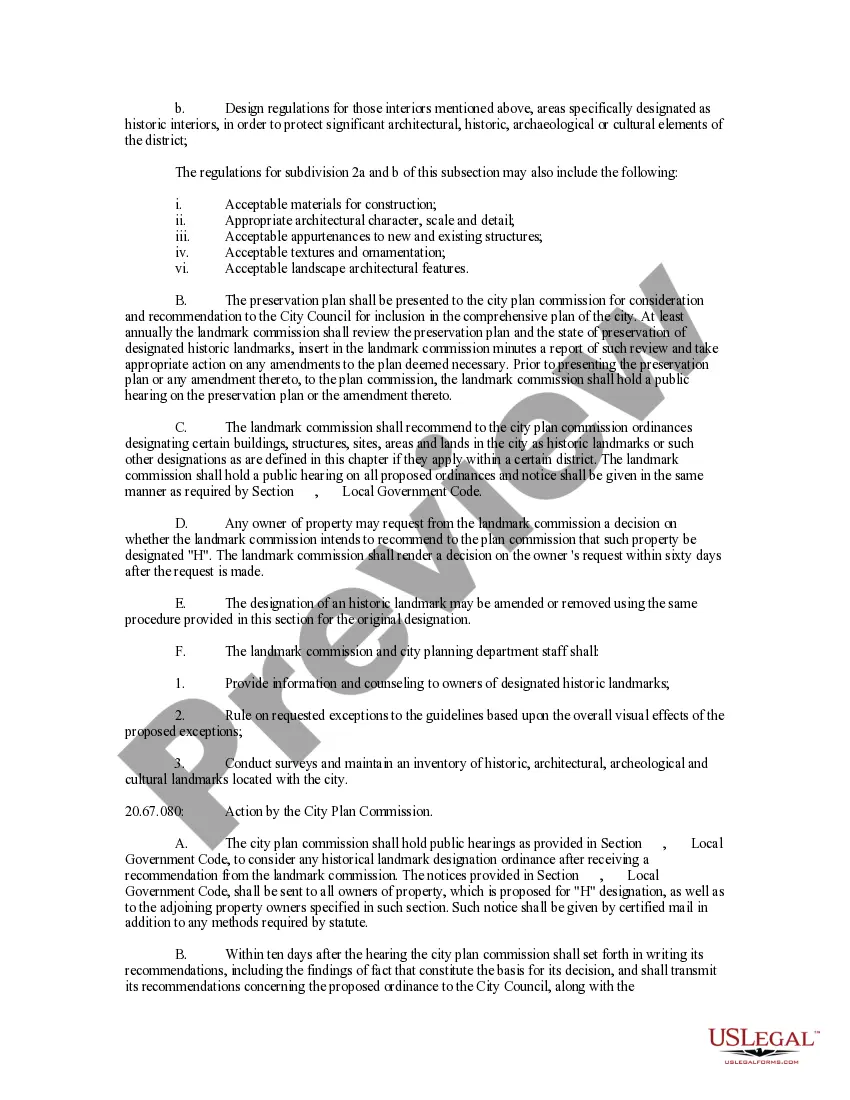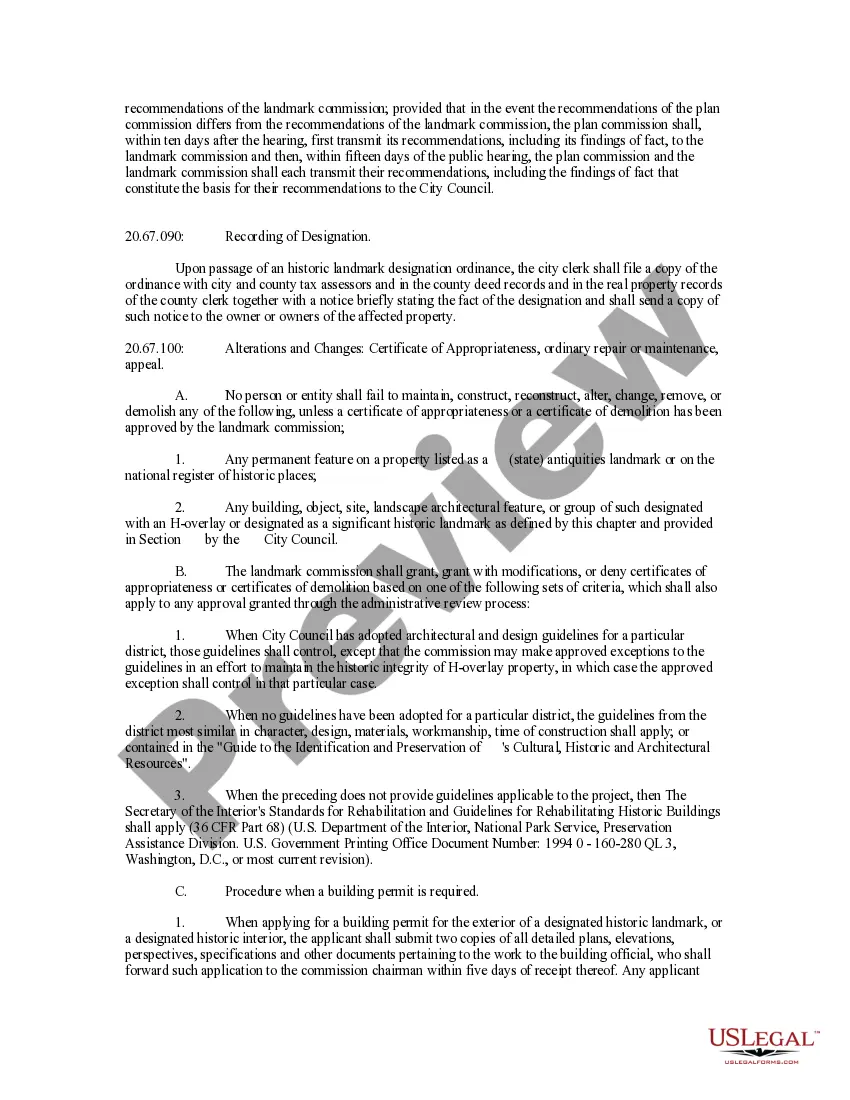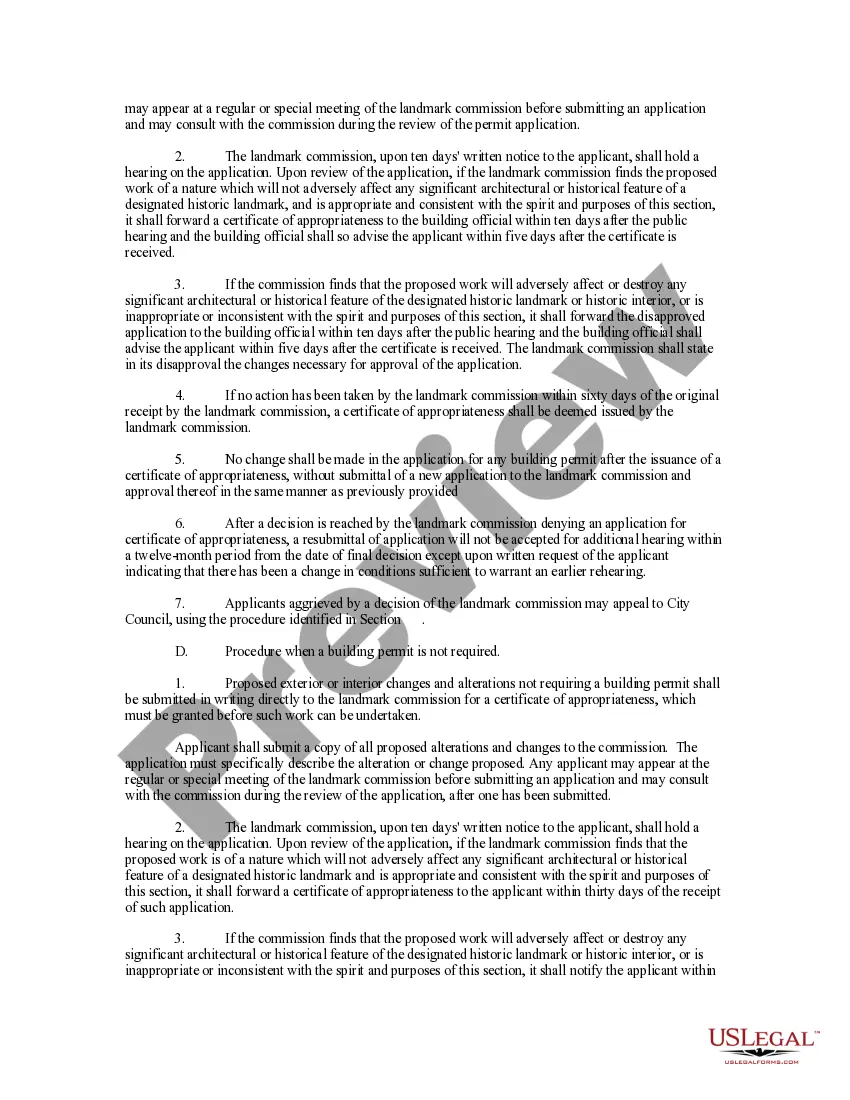Nebraska An Ordinance Amending Historic Property or Landmark Preservation Provisions
Description
How to fill out An Ordinance Amending Historic Property Or Landmark Preservation Provisions?
If you need to total, down load, or produce legal papers layouts, use US Legal Forms, the largest assortment of legal forms, that can be found on the web. Utilize the site`s easy and handy look for to get the paperwork you will need. Various layouts for organization and specific purposes are sorted by types and states, or key phrases. Use US Legal Forms to get the Nebraska An Ordinance Amending Historic Property or Landmark Preservation Provisions with a handful of mouse clicks.
If you are already a US Legal Forms client, log in to your bank account and click on the Obtain key to obtain the Nebraska An Ordinance Amending Historic Property or Landmark Preservation Provisions. Also you can access forms you earlier delivered electronically inside the My Forms tab of your bank account.
If you are using US Legal Forms the very first time, follow the instructions under:
- Step 1. Be sure you have selected the shape for your appropriate area/nation.
- Step 2. Make use of the Preview choice to look over the form`s information. Never overlook to see the information.
- Step 3. If you are not satisfied with the develop, utilize the Search field near the top of the display screen to locate other versions in the legal develop web template.
- Step 4. When you have located the shape you will need, click on the Get now key. Select the costs prepare you favor and add your qualifications to register for an bank account.
- Step 5. Approach the deal. You can utilize your charge card or PayPal bank account to complete the deal.
- Step 6. Select the formatting in the legal develop and down load it on your own device.
- Step 7. Full, change and produce or signal the Nebraska An Ordinance Amending Historic Property or Landmark Preservation Provisions.
Every legal papers web template you purchase is yours forever. You have acces to each develop you delivered electronically inside your acccount. Click the My Forms portion and pick a develop to produce or down load again.
Remain competitive and down load, and produce the Nebraska An Ordinance Amending Historic Property or Landmark Preservation Provisions with US Legal Forms. There are millions of expert and express-particular forms you can use to your organization or specific needs.


























